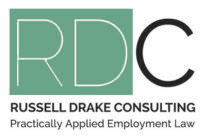A Constructive Dismissal is where an employee deems their employment to now be so untenable that they are unable to continue, as opposed to a usual dismissal where the employer has ended the employee’s employment as a result of some action – usually a disciplinary or restructuring process. We are seeing a significant increase in the number of personal grievance claims being received for Constructive Dismissal.
The difference between the two ways of ending an employment relationship are;
- if the employee ends the relationship – the burden of proof is for the employee to demonstrate that they had no option but to do so,
- whereas if the employer ends the employment relationship the burden lies with the employer to demonstrate that this was justified (process and decision).
A recent case from the Employment Relations Authority (ERA) demonstrates the implications of an employer’s actions that may constitute an Unjustified Constructive Dismissal.
Nonu v Construction Industrial Services Limited [[2022] NZERA 297]
Read the full case here: https://www.employment.govt.nz/assets/elawpdf/2022/2022-NZERA-297.pdf
Mr Nonu worked for Construction Industrial Services (CIS) removing asbestos from buildings. On 27 August 2020 Mr Nonu suffered a work-related injury that required him to have a period of time off work on ACC. This absence lasted several months with Mr Nonu unable to return to work on a gradual basis due to the fact that CIS could not offer him light duties.
When Mr Nonu was fit to return to full duties he called the CIS Director, Mr Oelofse to confirm his return-to-work date and recommencement details. Mr Oelofse advised that, while he was happy for Mr Nonu to return, he would be unable to pay him the higher asbestos rate and although Mr Nonu stated that he was happy to recommence on a lower rate Mr Oelofse suggested that he should start to look for another job.
Mr Nonu then resigned from his employment stating that he felt that he was being forced to leave the company, with Mr Oelofse accepting his resignation.
In investigating the Personal Grievance claim, the ERA considered the Court of Appeal decision in Auckland Shop Employees Union v Woolworths (NZ) Ltd which held that constructive dismissal includes, but is not limited to, cases where an employer gives an employee a choice of resigning or being dismissed. This outlined that an employer who has followed a course of conduct with the deliberate and dominant purpose of coercing an employee to resign, or through a breach of duty by the employer which causes an employee to resign, may be deemed as unjustified.
The ERA determined that, despite being off work for several months, Mr Nonu’s employment continued throughout the period he received ACC payments. The Authority found that CIS agreed to a date for Mr Nonu’s return to work, then reneged on that agreement without making it clear why, and without giving Mr Nonu a fair opportunity to comment on that decision or provide further information which might be relevant. Mr Oelofse had made it clear to Mr Nonu that CIS would not be offering him any further work, either on the day of his return to work or subsequently.
The Authority established that Mr Nonu was unjustifiably constructively dismissed. The Authority accepted Mr Nonu was upset and distressed due to his dismissal and awarded Mr Nonu the sum of $18,000 as compensation for hurt and humiliation.
This case demonstrates how the simple act of suggesting that an employee should consider looking for new employment may, if this then causes the employee to resign, result in significant liabilities for the employer. If CIS genuinely held concerns that they would be unable to provide Mr Nonu with ongoing employment as a result of his prolonged absence, they could have had a legitimate reason to end his employment without incurring an employment liability. This however would have required engaging in a simple consultation process conducted in accordance with all required procedural fairness steps.
This case demonstrates further how a simple process omission can result in significant employment liability.
If you find yourself in any situation where you believe that you may not be able to sustain the ongoing employment of a staff member, please feel free to contact us directly before taking any further steps. A simple phone call may avoid an act of frustration or omission that results in unnecessary claims and liabilities.

